As a pet owner, I understand the importance of creating a calming environment for hyper-sensitive small pets. It’s my responsibility to ensure their well-being and happiness. That’s why I’ve learned effective techniques for calming small pets who are prone to anxiety and stress. By implementing these strategies, I can provide them with the comfort and security they need.
Key Takeaways
- Understanding the causes of anxiety in small pets is essential for implementing effective calming techniques.
- Recognizing the signs of anxiety, such as excessive barking or pacing, helps to address and alleviate their stress.
- Establishing a consistent schedule for small pets creates a sense of security and reduces their anxiety levels.
- Using music or white noise can create a soothing environment and drown out triggering noises.
- Thundershirts provide gentle pressure that mimics a comforting hug, helping to calm small pets during stressful situations.
Recognizing Signs of Anxiety in Small Pets
Small pets, such as dogs, can show various signs of anxiety that indicate their distress and unease. Understanding these signs is crucial for providing the best care and support to help them through their anxious moments. By recognizing and addressing these signs promptly, we can create a calming environment for our furry companions.
Anxiety Signs in Small Pets:
- Excessive barking and whining: Small pets may bark or whine excessively when they feel anxious or stressed. This vocalization is their way of expressing their discomfort and seeking attention or relief.
- Destructive behavior: Anxiety can manifest in destructive behaviors, such as chewing furniture, scratching walls or doors, or tearing up belongings. These actions are often an outlet for their pent-up energy or an attempt to alleviate anxiety.
- Panting and pacing: Rapid panting, even in the absence of physical exertion or heat, can be a sign of anxiety. Small pets may also exhibit restless pacing, unable to settle down due to their heightened anxiety.
- Trembling: Small pets may visibly tremble or shake when they feel anxious. This trembling is a physiological response to the release of stress hormones and the body’s attempt to cope with the perceived threat.
- Loss of appetite: Anxiety can cause small pets to lose interest in food or have a decreased appetite. They may eat less or completely refuse to eat, leading to potential weight loss and malnutrition.
- Trying to hide or escape: When small pets feel overwhelmed, they may seek refuge in hiding spots or attempt to escape the stressful situation. They may crawl under furniture, hide in tight spaces, or try to run away.
Recognizing these signs allows us to intervene and provide the necessary support and reassurance for our small pets. It’s important to note that anxiety symptoms can vary from pet to pet, so being attuned to their individual behaviors is vital.
“Understanding the signs of anxiety in small pets helps us implement effective strategies to address their distress and create a safe, comforting environment for them.”
When it comes to calming our anxious small pets, being observant and responsive to their needs is key. By identifying the signs of anxiety early on, we can take appropriate steps to alleviate their stress and promote their overall well-being.
| Signs of Anxiety | Description |
|---|---|
| Excessive barking and whining | Small pets vocalize excessively to express anxiety and seek attention. |
| Destructive behavior | Anxious small pets may engage in destructive actions as a coping mechanism. |
| Panting and pacing | Rapid panting and restless pacing are physical manifestations of anxiety. |
| Trembling | Trembling or shaking can occur when small pets feel anxious or stressed. |
| Loss of appetite | Anxiety can lead to a decreased interest in food and reduced appetite. |
| Trying to hide or escape | Anxious small pets may seek hiding spots or attempt to flee from stressful situations. |
Establishing a Consistent Schedule for Small Pets
Creating and maintaining a consistent schedule is crucial for the comfort and well-being of small pets, such as dogs. Any small changes in their routines can trigger stress and anxiety, which can have a negative impact on their overall health. By establishing regular feeding times, exercise times, playtimes, and sleep times, pet owners can provide a sense of security and stability for their furry companions.
The Importance of a Consistent Schedule
A consistent schedule helps small pets feel more secure and reduces their anxiety levels. By having a routine, they know what to expect throughout the day, which helps them feel more in control and less stressed. Small pets thrive on predictability and structure, and a consistent schedule can provide them with a sense of stability in their environment.
“A consistent schedule is vital for small pets, as it helps them feel safe, secure, and reduces their anxiety levels.”
– Dr. Emily Peterson, Veterinarian
Implementing a Consistent Schedule
When establishing a consistent schedule for small pets, it’s important to consider their specific needs and preferences. Here are some key elements to include:
- Feeding Times: Set specific times for meals and ensure that they are consistent every day. This helps regulate their digestion and prevents hunger-related anxiety.
- Exercise Times: Determine regular times for exercise, such as walks or play sessions. Exercise not only helps them burn off excess energy but also promotes mental and physical well-being.
- Playtimes: Allocate dedicated periods for interactive play with toys or engaging activities. This stimulates their minds, provides enrichment, and strengthens the bond between pet and owner.
- Sleep Times: Establish a cozy and quiet sleeping area where your small pet can rest undisturbed. Aim for a consistent bedtime routine to promote better sleep quality.
By following a consistent schedule, small pets can better adjust to their daily routines and experience less anxiety and stress.
| Benefits of a Consistent Schedule for Small Pets |
|---|
| 1. Reduced anxiety and stress |
| 2. Improved behavior and obedience |
| 3. Better sleep quality |
| 4. Enhanced overall well-being |
| 5. Strengthened bond with the owner |
Using Music and White Noise to Calm Small Pets
When it comes to calming small pets, music and white noise can be valuable tools. Whether you have a dog, cat, or another small pet, the power of music therapy can create a soothing and calming environment, reducing their stress and anxiety levels.
There are numerous apps and playlists specifically curated to calm and soothe dogs. These carefully selected tunes have a calming effect that can benefit your furry friend. Playing gentle melodies or classical music can help create a relaxing atmosphere and promote a sense of calmness.
In addition to music, white noise can also be effective in helping small pets feel calm and secure. White noise is a consistent sound that masks unpredictable noises, such as thunderstorms or fireworks, which can trigger anxiety in small pets. With the use of a white noise machine or app, you can create a constant and soothing background sound that drowns out external disturbances.
The Benefits of Music and White Noise:
- Reduces stress and anxiety levels in small pets
- Creates a soothing and calming environment
- Drowns out unpredictable noises that trigger anxiety
- Promotes relaxation and comfort
- Enhances sleep quality
Whether you choose to play music or utilize white noise, it’s important to consider your small pet’s preferences. Just like humans, pets have unique preferences for certain types of music or sounds. Observing their reactions can help you determine what works best for them.
Remember, while music and white noise can be beneficial in calming small pets, it’s crucial to consult with a veterinarian for personalized advice and guidance tailored to your small pet’s individual needs.
Now, let’s take a look at an example of a playlist that can help calm your small pet:
| Song | Artist | Genre |
|---|---|---|
| Moonlight Sonata | Ludwig van Beethoven | Classical |
| Weightless | Marconi Union | Ambient |
| Can’t Help Falling in Love | Elvis Presley | Easy Listening |
| Clair de Lune | Claude Debussy | Classical |
| Through Time | Craig Armstrong | Contemporary |
Remember to play the music at a moderate volume, allowing your small pet to benefit from the calming effects while still being aware of their surroundings.
Utilizing Thundershirts for Small Pets
Thundershirts are a fantastic tool for helping small pets, including dogs and cats, manage stress and anxiety. These specially designed garments apply gentle pressure to the body, creating a comforting and soothing sensation that mimics the feeling of being hugged. Thundershirts are particularly effective in calming small pets during thunderstorms, car rides, trips to the veterinarian, or fireworks displays.
“Thundershirts provide a safe and drug-free solution to help calm anxious small pets,” says Dr. Emily Wilson, a renowned veterinarian and pet behavior specialist. “The gentle pressure exerted by Thundershirts can have a profound calming effect on pets, providing them with a sense of security and reducing anxiety.”
Thundershirts work by utilizing the concept of “pressure therapy” or “deep touch pressure.” This technique has long been recognized for its ability to calm and soothe both humans and animals. The gentle pressure applied by Thundershirts activates the parasympathetic nervous system, triggering a relaxation response and reducing stress levels.
Using a Thundershirt is simple and easy. The garment is designed to fit snugly around the torso of the small pet and is secured with adjustable Velcro straps. It is important to ensure that the Thundershirt is not too tight or restrictive, allowing the pet to move comfortably while still experiencing the beneficial pressure.
When a small pet wears a Thundershirt, they can experience a significant reduction in anxiety symptoms. The comforting and soothing sensation provided by the garment helps them feel safe and secure in stressful situations. Many pet owners have reported positive results with Thundershirts, noting that their pets appear calmer and more relaxed when wearing them.
Thundershirts for Dogs and Cats: A Versatile Solution
Thundershirts are not limited to a specific type of pet or breed. They can be used for both dogs and cats, making them a versatile tool for any small pet owner. Thundershirts come in various sizes to accommodate different breeds and body types, ensuring a comfortable fit for every pet.
Whether it’s a dog who becomes anxious during car rides or a cat who gets nervous during thunderstorms, Thundershirts can provide the much-needed comfort and support to ease their anxiety. The gentle pressure provided by the Thundershirt helps pets feel grounded and secure, allowing them to better cope with stressful situations.
Table: Situations Where Thundershirts Can Benefit Small Pets
| Thunderstorms | Car Rides | Veterinary Visits | Fireworks |
|---|---|---|---|
| Calms pets during thunderstorms | Reduces anxiety during car rides | Provides comfort at the veterinarian | Helps pets cope with fireworks |
If you’re considering using a Thundershirt for your small pet, it’s important to introduce it gradually. Start by allowing your pet to sniff and familiarize themselves with the garment, gradually moving on to short periods of wearing it around the house. This will help your pet associate the Thundershirt with positive experiences and increase their comfort levels.
While Thundershirts can be an effective tool for managing stress and anxiety in small pets, they may not work for every individual. Each pet is unique, and their response to various calming techniques may vary. It’s always a good idea to consult with a veterinarian or pet behavior specialist to determine the best approach for your small pet’s specific needs.
By utilizing Thundershirts, small pet owners can provide their furry companions with a sense of security and calmness, helping them navigate through stressful situations more comfortably. These garments offer a drug-free and non-invasive solution to help small pets relax and feel safe, ensuring their overall well-being and happiness.
Exercise and Mental Stimulation for Small Pets
Regular exercise and mental stimulation play a crucial role in calming small pets, including dogs. Not only does exercise help burn off excess energy, but it also releases endorphins that reduce anxiety and stress. Furthermore, engaging in activities that provide mental stimulation can help calm small pets and promote their overall well-being.
One effective way to exercise small pets is through daily walks. Not only does this provide physical exercise, but it also allows dogs to explore their environment and engage their senses. Additionally, playing fetch is a great activity that can be done both indoors and outdoors. This game helps small pets release energy while also stimulating their minds as they chase after the thrown object.
Another option to consider is interactive puzzle toys. These toys are designed to challenge small pets mentally as they search for treats or solve puzzles to access their food. This type of mental stimulation can help redirect their focus, reduce anxiety, and provide a sense of accomplishment.
It’s important to remember that mental stimulation is just as essential as physical exercise for small pets. Both aspects work together to provide a holistic approach to their well-being. By engaging their minds and providing them with opportunities to problem-solve and explore, we can help calm their anxieties and create a sense of fulfillment.
Training sessions can also provide mental stimulation while strengthening the bond between small pets and their owners. Teaching them new commands or tricks not only challenges their minds but also boosts their confidence and sense of achievement. It’s important to keep these sessions short and rewarding to prevent them from becoming overwhelming for small pets.
Benefits of Exercise and Mental Stimulation for Small Pets:
- Reduces anxiety and stress levels
- Burns off excess energy
- Promotes physical and mental health
- Enhances problem-solving and cognitive skills
- Strengthens the bond between pets and owners
By incorporating regular exercise and mental stimulation into the daily routine of small pets, we can provide them with the outlets they need to thrive and find balance. These activities not only promote good health but also contribute to their overall happiness and well-being.
| Exercise Activities | Mental Stimulation Activities |
|---|---|
| Walking | Interactive puzzle toys |
| Playing fetch | Training sessions |
| Agility courses | Hide-and-seek games |
| Swimming | Treat-dispensing toys |
Natural Supplements and Desensitization Techniques for Small Pets
When it comes to calming hyper-sensitive small pets, natural supplements and desensitization techniques can play a vital role. Not only can they help alleviate anxiety, but they can also promote overall well-being and relaxation. However, it’s crucial to remember that every small pet is unique, and consulting with a veterinarian is essential before introducing any new supplements or techniques.
Natural Supplements for Calming Small Pets
Certain natural supplements have shown potential in calming small pets. Melatonin, for example, is a hormone that helps regulate sleep and wake cycles and has sedative-like properties. It can be particularly beneficial for pets facing anxiety or sleep disturbances caused by loud noises, separation anxiety, or changes in routine. Similarly, chamomile, a gentle herb known for its soothing properties, can be used to promote relaxation and reduce stress in small pets.
When considering natural supplements for your small pet, it’s crucial to consult with a veterinarian. They can provide guidance on the appropriate dosage and ensure the supplement is safe and suitable for your pet’s specific needs.
Desensitization Techniques for Alleviating Anxiety
Desensitization techniques involve gradually exposing small pets to anxiety-inducing stimuli in a controlled and safe environment. The goal is to help them develop tolerance and reduce their anxiety response. This approach is commonly used for pets with specific fears, such as thunderstorms, fireworks, or car rides.
Counterconditioning is often combined with desensitization techniques. It involves pairing the anxiety-inducing stimuli with positive experiences, such as treats or playtime, to create a positive association and reduce anxiety.
The Benefits of Natural Supplements and Desensitization Techniques
“Natural supplements and desensitization techniques are valuable tools for managing anxiety in small pets. By providing a holistic approach to calming, they can enhance the overall well-being and quality of life for our beloved furry friends.”
By incorporating natural supplements and desensitization techniques into your small pet’s routine, you can help them feel more calm, relaxed, and secure. These approaches provide a non-invasive and drug-free way to address anxiety, promoting a healthier and happier life for your small pet.
Conclusion
Calming hyper-sensitive small pets requires a combination of effective techniques and strategies. By establishing a consistent schedule, small pets can experience a sense of comfort and security, reducing their anxiety levels. Incorporating music or white noise creates a soothing environment and helps drown out triggering noises. Thundershirts, with their gentle pressure, provide a comforting sensation to small pets in stressful situations.
Regular exercise and mental stimulation play a crucial role in keeping small pets calm and balanced. By engaging in activities like walking, playing fetch, and using puzzle toys, small pets can release pent-up energy and experience reduced anxiety and stress levels. Considering natural supplements, with guidance from a veterinarian, can further support their emotional well-being.
Desensitization techniques, such as gradual exposure to anxiety-inducing stimuli and counterconditioning, can help small pets overcome their fears and anxieties. Remember, each small pet is unique, so it’s important to tailor the calming techniques to their specific needs. Consulting with a veterinarian will provide personalized advice and guidance to ensure the best care for your small pet’s emotional health.
FAQ
What are the signs of anxiety in small pets?
Small pets, such as dogs, can display various signs of anxiety, including excessive barking, whining, destructive behavior, panting, pacing, trembling, loss of appetite, and trying to hide or escape from stressful situations.
How can I establish a consistent schedule for my small pet?
Creating and maintaining a consistent schedule for small pets, such as dogs, is essential for their comfort and security. It’s important to establish regular feeding times, exercise times, playtimes, and sleep times to reduce their anxiety levels caused by small changes in routines.
Can music or white noise help calm small pets?
Yes, playing music or white noise can be helpful in calming small pets, including dogs. Music therapy provides a soothing and calming environment, reducing stress and anxiety levels. Many apps and playlists are specifically curated to calm and soothe dogs. White noise or music can also drown out unpredictable noises that trigger anxiety, such as thunderstorms or fireworks.
What are Thundershirts and how do they help small pets?
Thundershirts are garments designed to help small pets cope with various stressful situations. These shirts apply gentle pressure to the body and create a comforting and soothing sensation, similar to being hugged. Thundershirts can be effective in calming small pets during thunderstorms, car rides, trips to the veterinarian, or fireworks.
How does exercise and mental stimulation help calm small pets?
Regular exercise and mental stimulation are essential for calming small pets, including dogs. Exercise helps burn off excess energy, releases endorphins that reduce anxiety and stress, and keeps small pets physically and mentally healthy. Engaging in activities like walking, playing fetch, and using puzzle toys or training sessions provides mental stimulation and helps calm small pets.
Are natural supplements and desensitization techniques helpful for calming small pets?
Yes, natural supplements like melatonin or chamomile can have a calming effect on small pets. However, it’s important to consult with a veterinarian before giving any supplements to ensure their safety and effectiveness. Desensitization techniques, such as gradually exposing small pets to anxiety-inducing stimuli and using counterconditioning, can also help alleviate their anxiety.
What are some effective calming techniques for hyper-sensitive small pets?
Calming hyper-sensitive small pets requires a combination of strategies, including establishing a consistent schedule, using music or white noise, utilizing Thundershirts, providing exercise and mental stimulation, considering natural supplements, and implementing desensitization techniques. It’s important to remember that every small pet is unique, so tailor the calming techniques to their specific needs. Consulting with a veterinarian is always recommended for personalized advice and guidance.


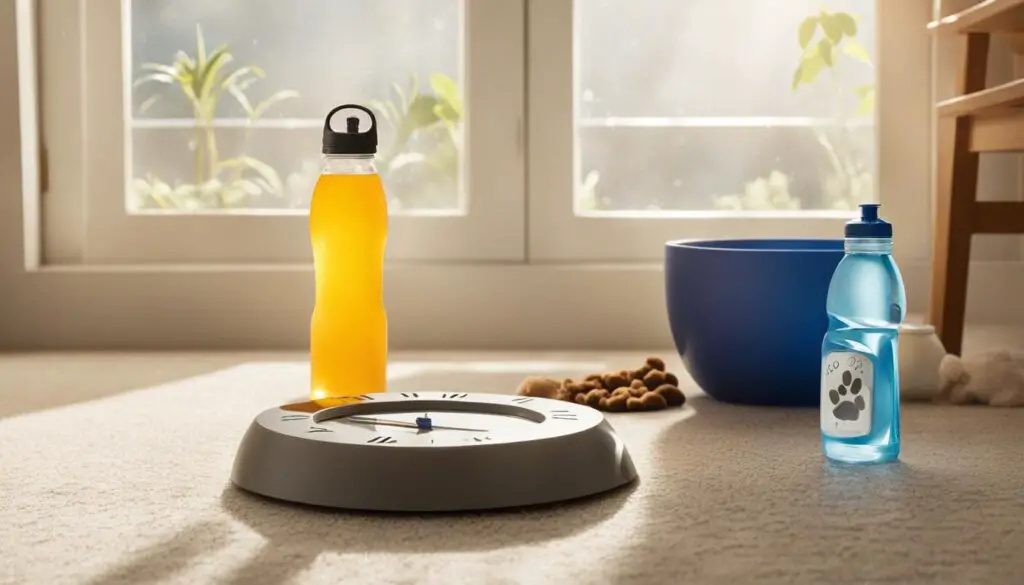
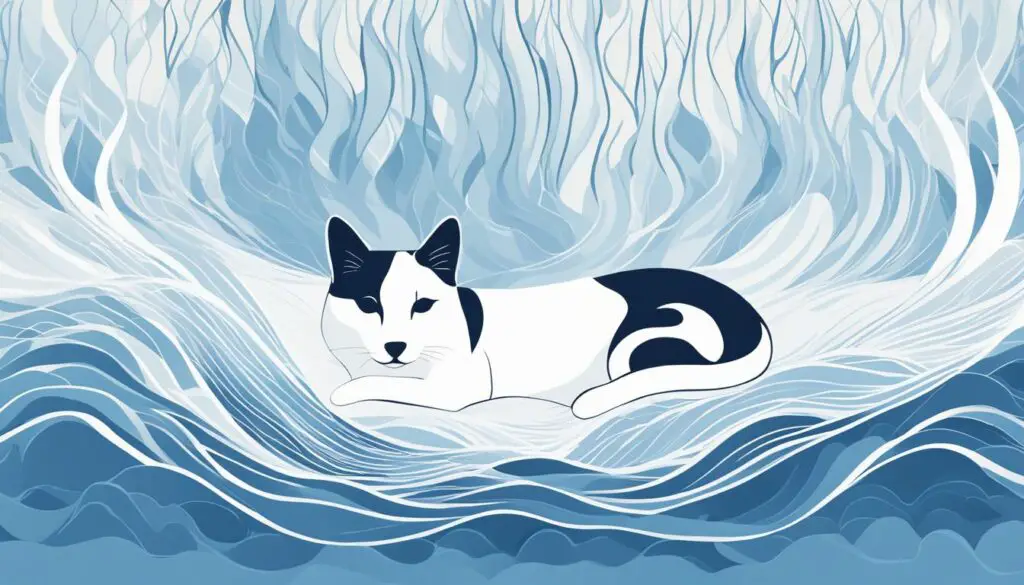
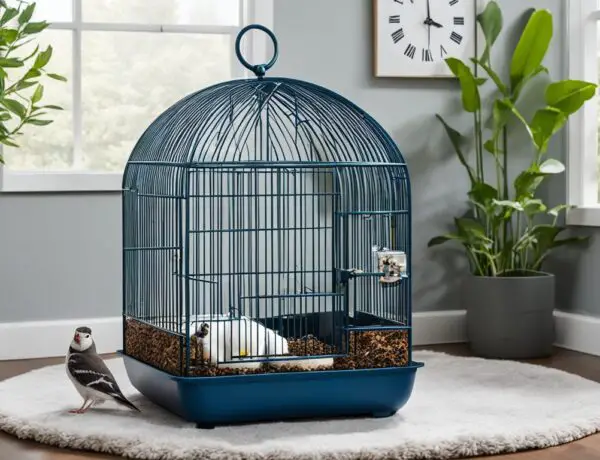
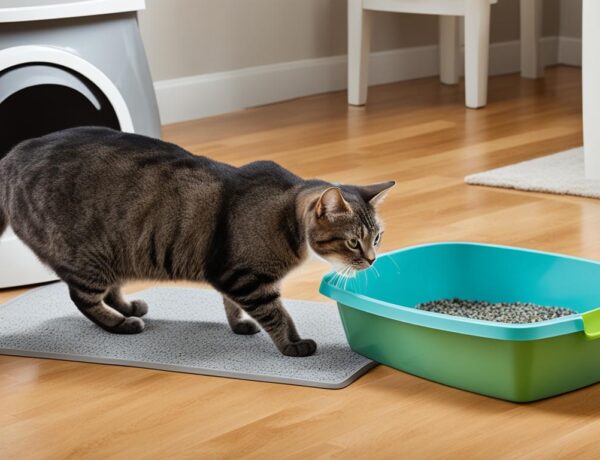
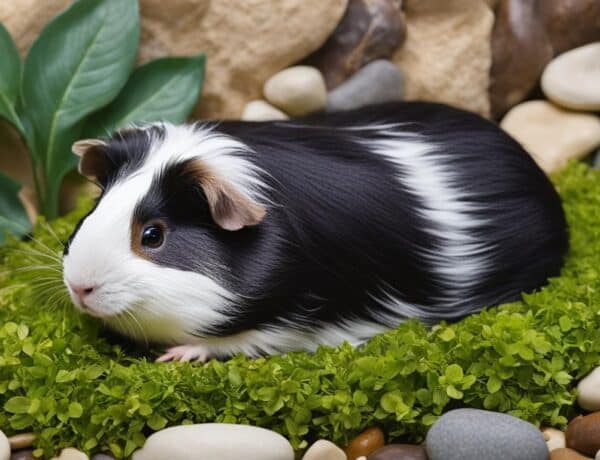
No Comments